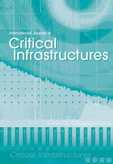In this article, we suggest the use of the Gini Index to measure the inequality in infrastructure services provided within an urban region. We develop a functional form for the Lorenz Curve, the basis of measurement of the Gini Index. The sparse nature of data available to measure the distribution of infrastructure services within an urban region results in a challenge in estimating the Lorenz Curve. The proposed functional form for the Lorenz Curve requires a sparse amount of data (only 25th and 50th percentile) and is simple to estimate and compute the coefficients of the equation as well as the Gini Index. Our methodology is shown to be relatively accurate in estimating the Gini Index for national-level income data compared to other formulations found in the literature. In this paper, with the help of collected data, we demonstrate the use of the Gini Index to characterize urban regions in terms of their accessibility of public infrastructure services.

DOI: 10.1504/IJCIS.2012.049037
(*Abhik Kumar Das is the other author of this paper.)
